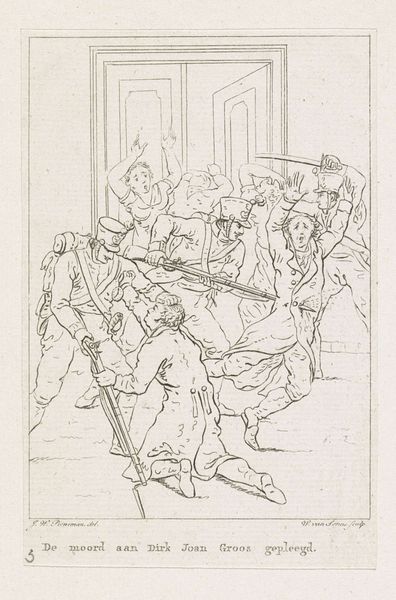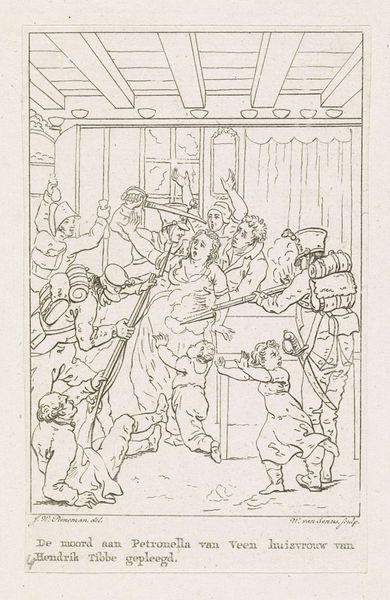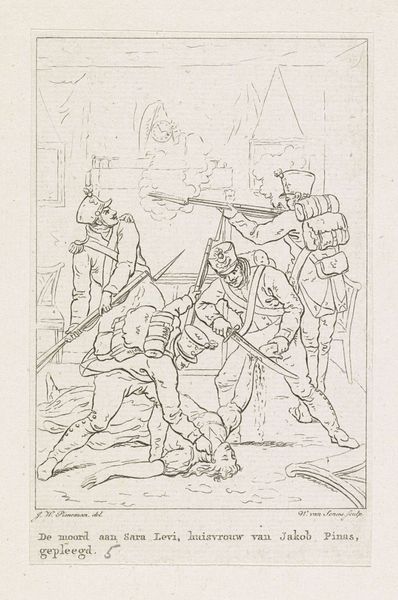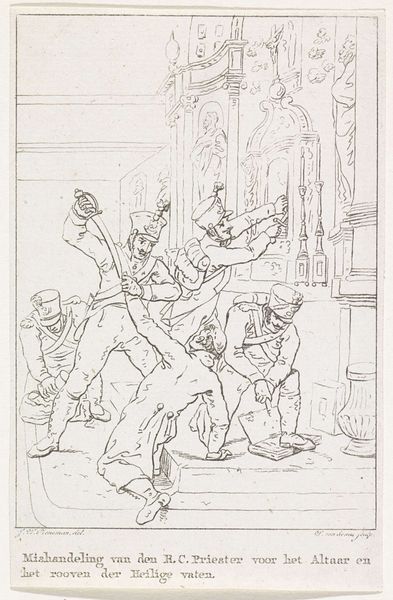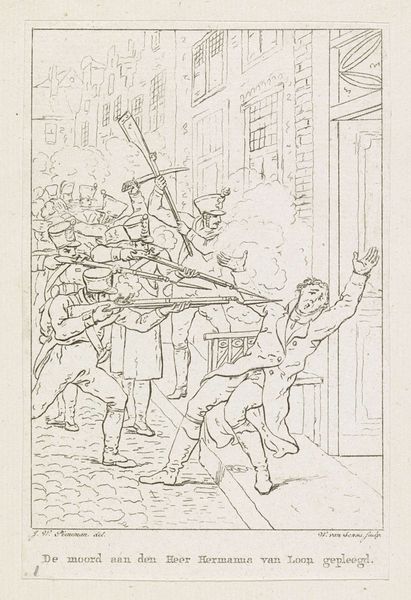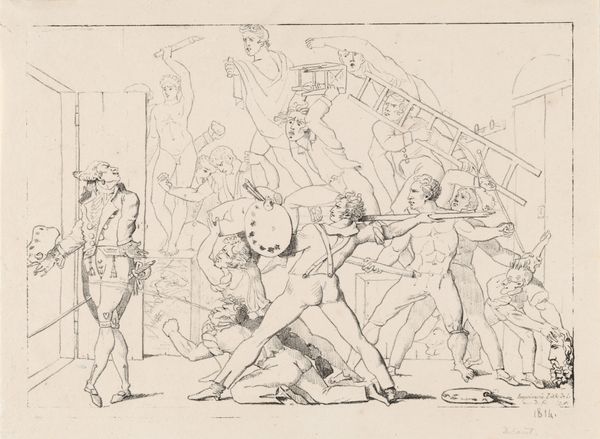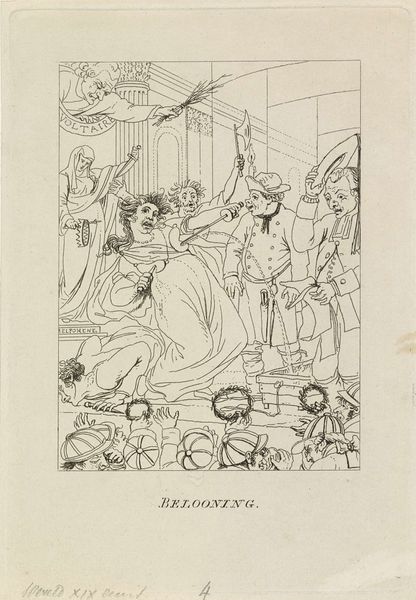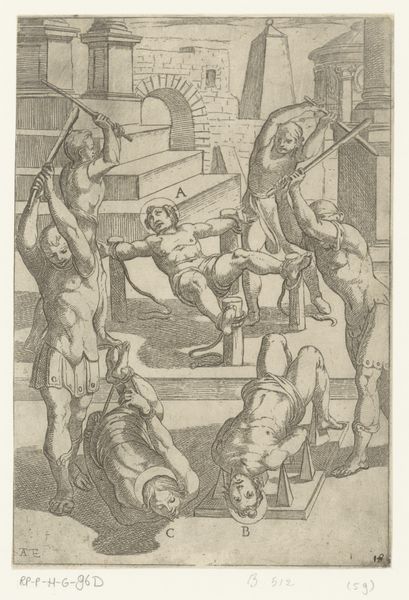
drawing, ink
#
drawing
#
narrative-art
#
war
#
figuration
#
ink
#
genre-painting
#
history-painting
Dimensions: height 144 mm, width 93 mm
Copyright: Rijks Museum: Open Domain
Editor: Here we have Willem van Senus' drawing, "Moord te Woerden op W. Schuil van der Does, 1813," created around 1813-1814. It's rendered in ink, and depicts a violent scene, perhaps a domestic invasion? I'm struck by how raw and immediate the linework feels. What do you see in this piece, considering its historical context? Curator: Well, consider the materials: ink on paper, easily reproducible. This suggests a dissemination of a political narrative. The print implicates viewers. What did it mean to see images of violence being perpetrated by, supposedly, French soldiers against a Dutch family? Think of the role of consumption of mass produced art at that specific time. How would a print like this impact the ongoing sentiment of occupation? Editor: So, the cheap, accessible materials democratize the message? It's not some grand oil painting reserved for the elite, but something easily shared. The social context is everything here! Curator: Exactly! Think about who controlled the means of production and distribution of these images. The artist's labor, the printer's labor, the vendor’s labour: each individual implicated in the narrative! Were they trying to resist French hegemony or simply generate income? Did van Senus create art to meet a demand in the marketplace? And how did this work contribute to constructing a national identity through the spectacle of victimization? It is less a document than an ideological project, perhaps. Editor: I never thought about it that way. Focusing on how the print was made, sold, and consumed completely shifts the way I interpret the depicted historical event. I thought the art focused solely on showing a past historical war scene, but it reveals instead the labour and political agenda in creating nationalism! Curator: Indeed, thinking through the labor and material conditions reveals much about its intent and impact.
Comments
No comments
Be the first to comment and join the conversation on the ultimate creative platform.
